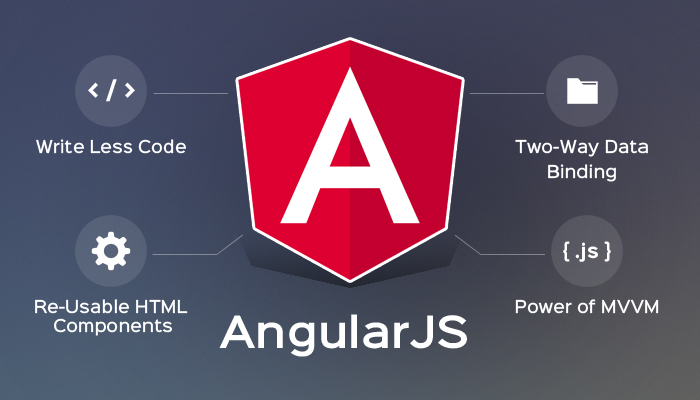Angular JS
Redprism came a long way intending to ‘Transform the Career and Lives’ of the individuals in the competitive world and up skilling their career, and creating a balance between the learning and implementing the real-time cases in education and achieve the dreams.

Angular JS
What is Angular JS?
Angular is a popular framework which is used for building web applications. Angular is considered as one of the best open-source JavaScript frameworks. Angular presents the tools and design patterns to build the projects in maintainable way. Angular is a framework which is powerful, modern and has good ecosystem that is supported on various platforms like web, mobile and desktop. Angular has different versions like Angular 1, Angular 2, Angular 4, Advanced Angular 5, Advanced Angular 6. The first version of Angular is Angular 1 which is also known as AngularJS and its architecture is based on Model View Controller. Angular 2 has significant change in structure compared to AngularJS. Angular 2 is based on Components Structure. Angular 2 mainly focuses on mobile apps development. Angular 4 is much faster than the previous versions. A lot of enhancements were made to reduce the size of the AOT (ahead-of-time) compiler generated code in Angular 4. Angular 5 is advanced version of Angular 4. Advanced Angular 5 has improved loading and execution times with new features and service improvements.
Why AngularJS?
AngularJS 2, revised version of AngularJS has been released in the recent past to achieve optimized memory management, mobile-friendly platform and less utilization of CPU cycles. So, there is a high demand for AngularJS in the business world for the freshers/beginners who are passionate about web designing. AngularJS is the preferred framework for web developers to develop and design dynamic user-friendly websites. Due to its SPA (Single Page Application) capability and unit testable quality, it is implemented in many real-time applications like interactive dashboards and reports.
Best Angular Training in Noida
Redprism is the best Angular JS institute in Noida. Angular being the latest framework for web design has many difference from its predecessors and needs no in-depth knowledge of its previous versions.The Angular application is made using the following: – Modules – Component – Template – Directives – Data Binding – Services – Dependency Injection – Routing.
The major benefits of taking up this course is that:
- Our institute takes care of the entire concepts surrounding Angular 6.
- Our institute takes care of the entire concepts surrounding Angular 6.
- We offer real time challenges from a unique point of view which caters the attractiveness of the website.
- We cover the use of typescript where the angular is fully based.
- We handle classes in a trainee friendly manner with flexible time schedules.
Most of the leading companies have created their websites and mobile apps using Angular 6. It will be used in the future as well. Hence having an expertise in this area will open a wide array of opportunities. Get enrolled in our course and you will build an expertise over Angular 6 and its utility.
Prime Features why to Join RedPrism?:-
- Industry Expert Trainers with 10-15 years of experience.
- Course content is curate by best Subject Matter Experts
- Practical Assignments.
- Real Time Projects.
- Video recording of each and every session.
- Yours doubts are clarified with 24*7 assistance by our experts.
- We conduct regular Mock tests and certifications at the end of course.
- Certification Guidance.
- Recognized training complete certificate.
- 100% Placement Assistance.
- Less fees as compared to other institutes.
- Flexi payment options
- Scholarship Available
Course Content:-
o What is Angular and its versions?
o Need of Angular?
o Setting up Environment
o Typing System
o Type Script Types
o Enums, Consts & Type aliases
o Arrays Types
o Functions
o Optional, Default parameters
o Fat Arrow Functions
o Interfaces
o Object Oriented Programming
o Classes and Class Constructors
o Properties, Methods, Getters and Setters
o Generics and Decorators
o Why use Modules
o NgModule
o Declarations
o Providers
o Imports
o Bootstrapping
o The Core Module
o Shared Modules
o What are Components and their role
o Root Component
o Component Syntax
o Selectors, Templates and Styles
o Nested Components
o Component Life Cycle
o Initialization Hooks
o Destroy Hooks
o View Encapsulation
o Web Components
o Re-usable Components
o Adding Components Dynamically
o Entry Components
o Angular Data Bindings
o String Interpolation
o Property & Event Bindings
o Two Way Data Binding
o Template Variables
o Component Communications
o Input and Output
o ViewChild
o Content Projection
o Events and Event Emitters
o Listening to Event Emitters
o Container & Presentational Components
o Smart & Dumb Components
o Angular Directives
o Attribute Directives
o Built-In Attribute Directives
o Structural Directives
o Built-In Structural Directives
o NgIf, NgFor and NgSwitch Directives
o ng-container
o ng-template and template outlets
o ng-template context
o Custom Directives
o Element Refs, Renderers
Pipes
o What are Pipes
o Built-In Angular Pipes
o Currency Pipe
o Number Pipe
o Percent Pipe
o Lower and Upper Case Pipes
o Date Pipe
o Custom Pipes
o Custom pipe with parameters
o Pure and Impure Pipes
o What are Services in Angular
o Injectable Services
o Dependency Injection
o Singletons
o Export and Import Services
o Shared Services
o Providing Services
o Services at Component Level
o Global Services
o Forms Module
o Template Driven Forms
o NgForm & NgSubmit
o NgModel and Two way Bindings
o Form Validations
o Touched & Untouched states
o Pristine & Dirty states
o Valid and Invalid
o Form Submit
o Password & Confirm Password Validations
o Handling Check Boxes & Radio Buttons
o Handling Select, Range inputs
o What are Reactive Forms
o Reactive vs Template Driven Forms
o Form Group
o Form Control
o Form Array
o Form Builders
o Form Validators
o Required, Min, Max, Pattern Validators
o Custom Validators
o Custom Async Validators
o Subscribing to Form Values
o Setting & Patching the Forms
o Resetting the Form
o Form Status & Status Changes
o Handling Check boxes, Radio Buttons, Select options, Ranges etc.,
o Dynamically Generating Input Fields
o What are Routes
o How to Configure Routes
o Router Outlet
o Router Link & Navigation
o SPA (Single Page Application)
o Route Parameters
o Subscribing to route parameters
o Routes for Root Module and Child Modules
o Query Parameters and subscribing to them
o Activated Routes
o Route Guards
o Implementing Can Activate Guard
o Implementing Can Deactivate Guard
o Child Routes
o Introduction
o Why RxJs
o Observable interface
o Streams
o Operators
o Subscription
o Subject
o Schedulers
o Setup installing the module
o Making a request for JSON data
o Typechecking the response
o Reading the full response
o Error handling
o Requesting non-JSON data
o Sending data to the server
o Making a POST request
o Configuring other parts of the request
o Working with HTTP interceptors for better error handling in http requests
o Introduction
o Testing in Typescript
o Testing Component
o Testing Service/Provider
o Testing Pipe
o Manually
o Using the Angular CLI with Ahead-Of-Time (AOT) Compilation and Tree-Shaking (removing unused library code)
Implementation of all above concepts in a project.






